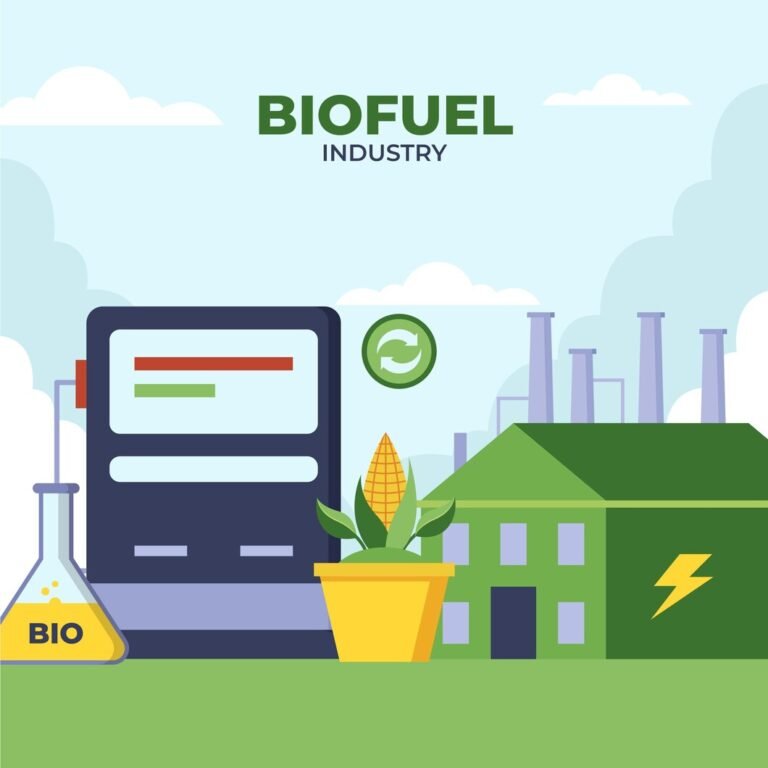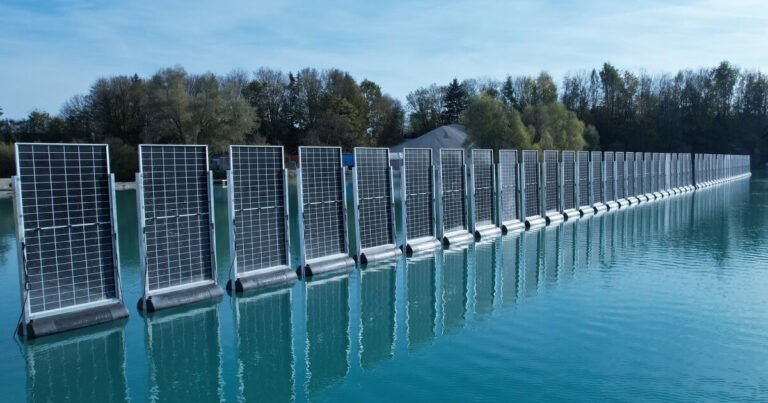Is Natural Gas Renewable or Nonrenewable Resource?
Energy powers our lives. It keeps our homes warm, our cars running, and our industries moving. Among all the energy sources we rely on, natural gas stands out—it’s efficient, widely used, and crucial to modern life. But there’s an ongoing debate: Is natural gas renewable or nonrenewable?
On the surface, it seems like a simple question. Natural gas comes from deep underground, formed over millions of years from decomposed plants and animals. That makes it nonrenewable, right? But the story doesn’t end there. Thanks to new technologies and sustainable energy solutions, some forms of natural gas can now be produced from organic waste, blurring the line between renewable and nonrenewable.
Understanding this issue isn’t just for scientists and policymakers—it affects all of us. The choices we make today about energy shape our future, from how much we pay for electricity to how we fight climate change.
In this guide, we’ll break down everything you need to know about natural gas, using real-world examples, expert insights, and the latest research. By the end, you’ll have a clear, balanced understanding of where natural gas fits in the future of energy.

In This Article
- What Is Natural Gas? A Primer
- Is Natural Gas Renewable or Nonrenewable?
- Real-World Insights: The Impact of Renewable Natural Gas
- The Environmental and Economic Considerations of Natural Gas
- The Future of Natural Gas: Where Do We Go From Here?
- Conclusion: What Should You Do?
What Is Natural Gas? A Primer
Natural gas is primarily composed of methane (CH₄) and comes from the remains of ancient marine microorganisms. Over millions of years, heat and pressure deep underground transformed this organic material into hydrocarbons, including oil, coal, and natural gas. Unlike oil, which is often found in liquid form, natural gas exists as a vapour trapped in porous rock formations beneath the Earth’s surface. It is extracted from these underground reservoirs and plays a major role in electricity generation, industrial processes, and residential heating worldwide.
Key Characteristics of Natural Gas
1. Highly Efficient and Cleaner than Other Fossil Fuels
Natural gas burns more cleanly than coal and oil, producing fewer air pollutants and greenhouse gases. According to the U.S. Energy Information Administration (EIA), the shift from coal to natural gas has significantly reduced CO₂ emissions in the U.S. power sector, with natural gas combustion emitting approximately 50–60% less carbon dioxide (CO₂) than coal when used for electricity generation. Additionally, research from MIT highlights that natural gas produces lower levels of nitrogen oxides (NOₓ) and virtually no sulfur dioxide (SO₂), both of which contribute to smog and acid rain.
2. Abundant (For Now) and Widely Used
The world has vast reserves of natural gas. According to Statista, the United States had approximately 17.4 trillion cubic meters (Tcm) (about 614 trillion cubic feet, Tcf) of proven natural gas reserves in 2023. At the current rate of consumption, these reserves could last for several decades.
Globally, Russia, Iran, and Qatar hold the largest reserves, collectively accounting for a significant portion of the world’s known supply. Russia leads with about 47,600 cubic kilometres (1,680 Tcf) of proven reserves, followed by Iran with 34,000 cubic kilometres (1,200 Tcf) and Qatar with 24,700 cubic kilometres (872 Tcf).
3. Versatile Across Many Sectors
Natural gas is used in a variety of ways:
- Electricity Generation: Over 38% of U.S. electricity was produced using natural gas in 2022.
- Heating: More than 48% of U.S. homes rely on natural gas for heating.
- Industrial Use: Essential for producing chemicals, fertilisers, and plastics.
- Transportation: Some buses, trucks, and even ships use compressed or liquefied natural gas (CNG/LNG) as fuel, reducing emissions compared to diesel.
The Growing Role of Liquefied Natural Gas (LNG)
Liquefied Natural Gas (LNG) is natural gas cooled to -260°F (-162°C), making it easier to transport over long distances. Countries without natural gas reserves, like Japan and South Korea, depend heavily on LNG imports. The International Energy Agency (IEA) predicts that global LNG demand will increase by 25% by 2030, driven by rising energy needs in Asia.

Learn More: Are Trees a Renewable Resource?
Is Natural Gas Renewable or Nonrenewable?
The short answer: Conventional natural gas is nonrenewable because it takes millions of years to form. However, renewable natural gas (RNG), also known as biomethane, is emerging as a potential sustainable alternative. Let’s break this down further.
Why Natural Gas is Classified as Nonrenewable
Formation Timeframe
Fossil fuels, including natural gas, take millions of years under extreme conditions to form. This means that once we extract and burn them, they cannot be naturally replenished within any practical timeframe. That’s why they are considered nonrenewable.
Finite Reserves
As of 2021, global proven natural gas reserves stand at about 7,257 trillion cubic feet. That sounds like a lot, but with current consumption rates, experts estimate these reserves could be depleted within a century. If we keep increasing our usage, that timeline shrinks even further.
Extraction Challenges
Extracting natural gas requires drilling and often involves hydraulic fracturing (fracking)—a process that pumps water and chemicals into the ground to release trapped gas. This method has serious environmental consequences, including groundwater contamination, methane leaks, and even earthquakes. Because of these risks, many environmentalists and scientists push for cleaner alternatives.
The Case for Renewable Natural Gas (RNG)
Renewable natural gas (RNG) is a game-changer in the energy world. Unlike fossil gas, which takes millions of years to form, RNG is produced in real-time from organic waste. It’s already being used in cities and farms across the world, offering a sustainable energy alternative.
How It Works
RNG comes from decomposing organic waste—things like food scraps, manure, and sewage. When these materials break down without oxygen (a process called anaerobic digestion), they release methane. This methane can be captured, cleaned, and used just like conventional natural gas.
Key Advantage
Unlike fossil gas, RNG is carbon-neutral. This means that the carbon it emits when burned is balanced out by the carbon it captures during its production, making it a much cleaner option.
Comparison Table: Conventional Natural Gas vs. Renewable Natural Gas
| Feature | Conventional Natural Gas | Renewable Natural Gas |
|---|---|---|
| Formation Time | Millions of years | Days to years |
| Carbon Footprint | High | Low to neutral |
| Source | Fossil deposits | Organic waste |
| Sustainability | Finite | Renewable |
The future of energy isn’t just about burning less—it’s about burning smarter. And RNG could be a key part of that future.
Real-World Insights: The Impact of Renewable Natural Gas
Personal Story: A Farmer’s Perspective
Meet John Hanselman, CEO of Vanguard Renewables, who collaborates with dairy farmers across the United States to transform agricultural waste into renewable energy.
“Partnering with dairy farmers to convert manure into renewable natural gas (RNG) has been a game-changer. Not only does it reduce greenhouse gas emissions, but it also provides farmers with an additional revenue stream,” John explains.
This collaboration involves installing anaerobic digesters on farms, which break down organic waste to produce biogas. This biogas is then upgraded to RNG, providing a sustainable energy source while addressing waste management challenges.
Case Study: Sweden’s Transition to Biogas
Sweden stands as a global leader in renewable energy, with biogas playing a pivotal role in its transportation sector. The country utilises biogas derived from organic waste to fuel vehicles, significantly reducing reliance on fossil fuels.
In the city of Västerås, household food waste is collected and processed into biogas, which is then used to power public buses. This initiative not only diverts waste from landfills but also contributes to a cleaner urban environment.
By 2030, Sweden aims to phase out natural gas in transportation entirely, replacing it with 100% biogas. This ambitious goal underscores the scalability and potential of biogas as a renewable energy source.
Expert Opinions and Research Findings
Dr. Emily Grubert, Environmental Engineer
“While renewable natural gas offers benefits like waste reduction and renewable energy production, it’s essential to consider its role within a broader sustainable energy strategy. We must balance RNG development with other renewable energy sources to achieve comprehensive climate goals,” advises Dr. Grubert, an environmental engineer and energy systems researcher.
Research Study: Life Cycle Analysis of RNG vs. Conventional Natural Gas
A comprehensive study by the International Energy Agency (IEA) analysed the life cycle greenhouse gas emissions of RNG compared to conventional natural gas. The findings revealed that RNG can reduce emissions by 50-90%, depending on the feedstock and production methods used. (ww2.arb.ca.gov)
The study also highlighted the importance of upgrading infrastructure to accommodate RNG, suggesting that such investments could enhance adoption rates and contribute to more sustainable energy systems.
The Environmental and Economic Considerations of Natural Gas
Environmental Impact
Methane Emissions: Extracting and transporting natural gas releases methane, a greenhouse gas 25 times more potent than carbon dioxide in trapping heat. This speeds up climate change, which is why leaks from pipelines and drilling sites are a huge concern.
Water Contamination: Fracking—used to extract natural gas—can pollute underground water sources. Some communities near fracking sites have reported unsafe drinking water, raising serious health concerns.
Air Pollution: While natural gas burns cleaner than coal, it still releases carbon dioxide and other pollutants into the air. This contributes to global warming and affects air quality, especially in heavily industrialised areas.
Economic Factors
Price Fluctuations: Natural gas prices aren’t stable. In 2022, the Russia-Ukraine war caused prices to spike, showing how global conflicts can impact household energy bills.
Investment in Renewable Natural Gas (RNG): Big companies like BP and Shell are investing in biogas projects, showing a shift toward cleaner energy. RNG could be a game changer, but it still needs better infrastructure to scale up.
Learn More: What Does Sustainably Sourced Mean?
The Future of Natural Gas: Where Do We Go From Here?
Policy and Regulation
Governments around the world are taking action. In the United States, the Inflation Reduction Act (2022) provides financial incentives to boost renewable natural gas (RNG) projects. This means businesses and energy companies get support to invest in cleaner alternatives. Over in Europe, the Green Deal is setting strict goals to reduce fossil fuel use, pushing industries to adopt more sustainable solutions.
These policies matter because change happens faster when governments create the right conditions. Lower costs, better technology, and clear rules encourage businesses and consumers to choose cleaner energy.
Technological Innovations
Scientists and engineers are working on ways to make natural gas cleaner and more sustainable. Two promising technologies are:
- Carbon Capture and Storage (CCS): This method traps carbon emissions from natural gas plants before they reach the atmosphere. The captured carbon is then stored underground, reducing pollution.
- Hybrid Energy Systems: These systems mix RNG with hydrogen or solar power, creating cleaner energy solutions with fewer emissions.
While these technologies are still developing, they show real potential to reduce the environmental impact of natural gas.
Conclusion: What Should You Do?
We all have a role to play in shaping our energy future. Whether you’re a homeowner, policymaker, or business owner, small choices can lead to big changes.
Key Takeaways:
- Conventional natural gas is nonrenewable, but RNG is a cleaner alternative.
- RNG is still new but has great potential to grow.
- The shift to cleaner energy is happening, and we need a mix of solutions to make it work.
Actionable Steps:
- Homeowners: Consider switching to RNG or renewable electricity.
- Policymakers: Support laws and funding that help expand RNG infrastructure.
- Business Owners: Look into biogas projects as a sustainable investment.
Change is coming, and the choices we make today will shape our energy future. We have an opportunity to move towards cleaner, smarter energy—let’s make the most of it.







